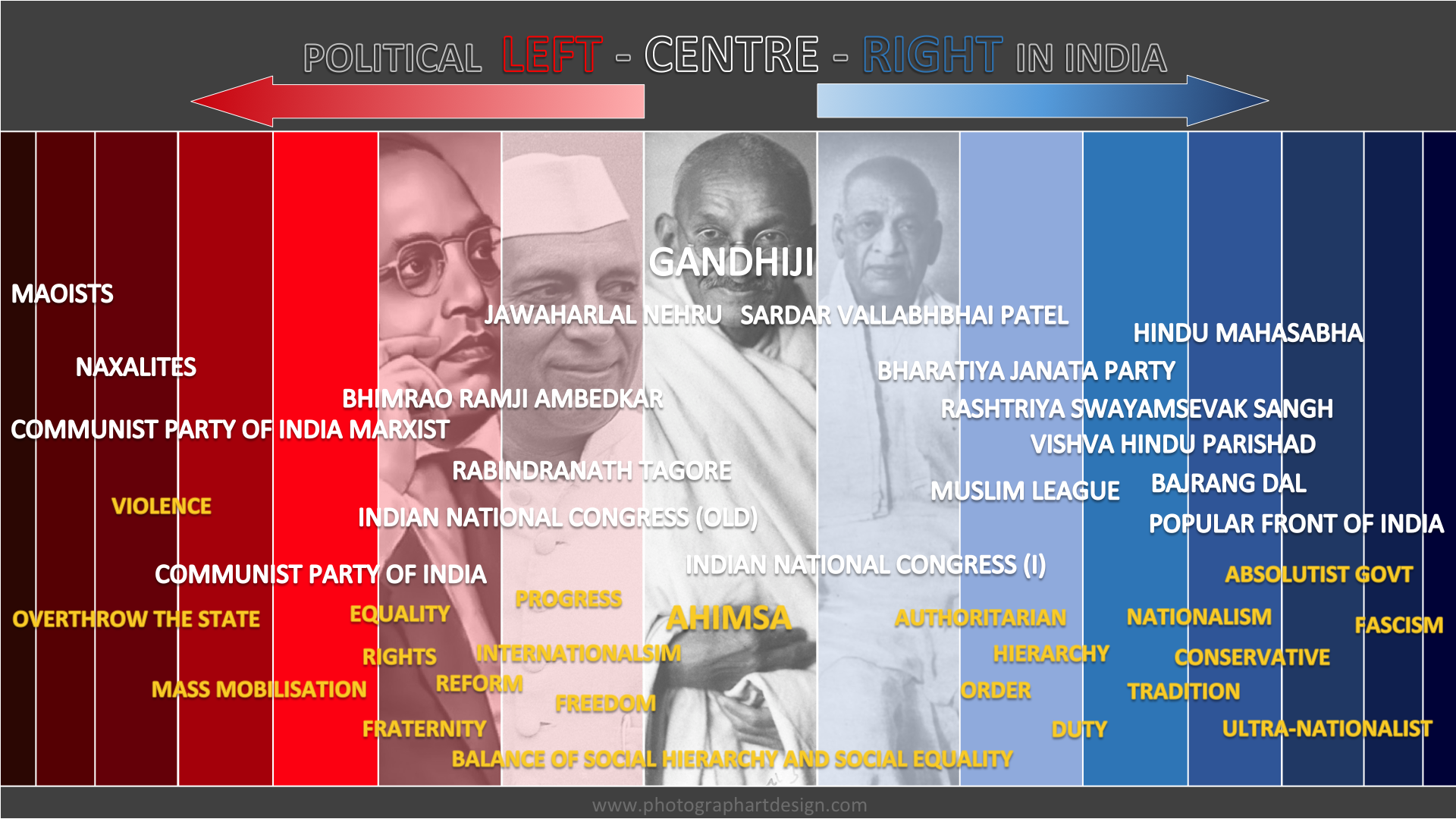Left-wing, right-wing, and centre are terms used to describe different positions on the political spectrum. The terms left-wing and right-wing originated from the seating arrangements in the French National Assembly during the French Revolution (1789). Supporters of the King and the traditional social order sat on the president's right side. These were generally considered more conservative and resistant to change. Supporters of the revolution and those advocating for a more egalitarian society sat on the president's left side. These were seen as more progressive and willing to challenge the status quo. Over time, these seating positions became symbolic of broader political viewpoints. The terms "left" and "right" were eventually used to describe the entire spectrum of political ideologies, not just those present during the French Revolution.
Left Wing focuses on equality, social justice, and reform. Left-wing ideologies generally believe in reducing economic inequality and increasing government intervention in the economy to achieve social goals. They hold on to values such us, freedom, fraternity, rights, progress, internationalism. They often advocate for a strong social safety net, progressive taxation, and government programs to address issues like poverty and healthcare.
Right Wing focuses on individual liberty, tradition, and limited government intervention in the economy. Right-wing ideologies generally believe in free markets, minimal government regulation, and a strong national identity. They hold on to values such as, order, hierarchy, duty, tradition, nationalism. They often support policies that promote economic growth, lower taxes, and a strong national defense.
Centre focuses on finding a balance between left-wing and right-wing ideas. Centre-wing and centre-left ideologies aim for a mix of social welfare programs and economic growth. They hold on to values such as, pragmatism, compromise, stability. They may support some level of government intervention but also encourage private sector participation.
The Spectrum of Governance: Left, Right, and Centre in Indian Politics
India, the world's largest democracy, boasts of a vibrant political landscape. Within this landscape, parties and ideologies can be broadly categorised as left-wing, right-wing, and centre. Each brings distinct approaches to issues like social welfare, economic policy, and national identity.
In the Indian context, though many may disagree and disown, it is proper and beneficial to consider Gandhi and his non-violence (Ahimsa) as the political centre; because at the extreme right and at the extreme left we see the use violence as a chosen means to achieve their goals.
Along with Gandhiji, Nehru was centre left and Patel was centre right. The Indian National Congress was a left leaning socialist organisation as it fought the British, but post independence the congress party also has exhibited tendencies of right wing. To the left we have the Communist Party of India and Communist Party of India (Marxist). To the extreme left of the political spectrum we have the Naxalites, and the banned Maoists.
To the right of the spectrum we have the Bharatiya Janata Party. Right-wing ideology emphasises economic liberalism, minimal government intervention, and a strong national identity. The BJP promotes policies like deregulation, privatisation, and fostering a competitive business environment. They advocate for social conservatism and a more assertive role for India on the world stage. On the far right we have the Rashtriya Swayamsevak Sangh (RSS), a Hindu nationalist organisation, and on the extreme right we have other parties upholding Hindutva, absolute government (authoritarianism), and ultra-nationalism. India also has the presence of parties upholding Muslim moderate, and at times, fundamentalist ideologies.
The balance of power between left, right, and centre keeps shifting. The rise of the BJP in recent years reflects a growing emphasis on economic development and nationalism. However, concerns about rising inequality and social issues ensure that left-wing ideas remain relevant. The centre space is likely to continue playing a crucial role in forging compromises and ensuring political stability.
Conclusion
Left, right, and centre in Indian politics represent a spectrum of approaches to governance. Each ideology offers valuable perspectives on national development. Understanding these diverse viewpoints is essential to navigating the complexities of Indian democracy. As the nation progresses, the interplay between these forces will continue to shape its future.
It’s important to note that a simplified representation of left, right, and centre will not do justice in understanding the complex political landscape of India . Parties may not always adhere strictly to one position on the spectrum, and there’s a significant role played by regional parties with their own unique agendas.

Comments
Post a Comment